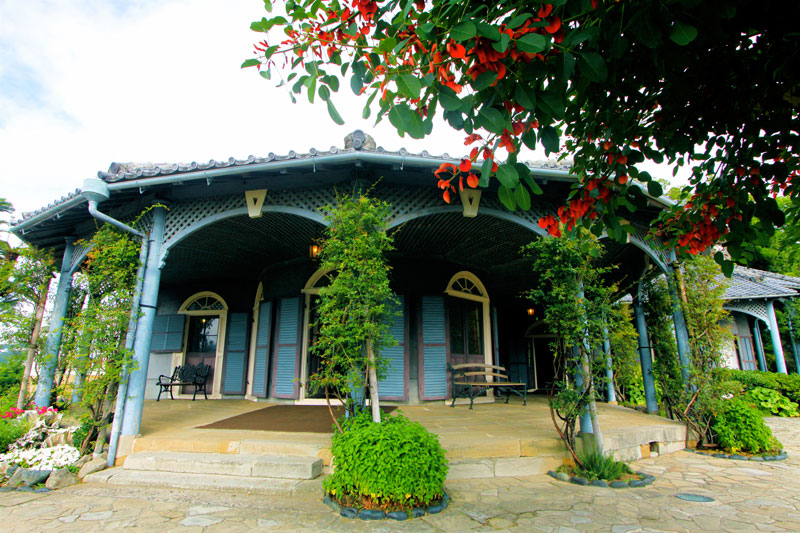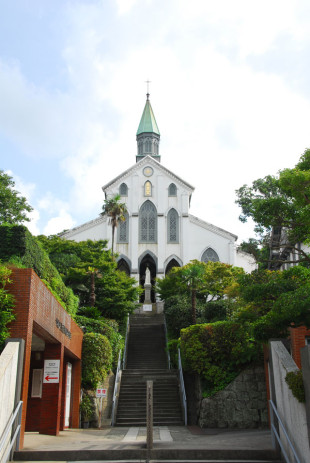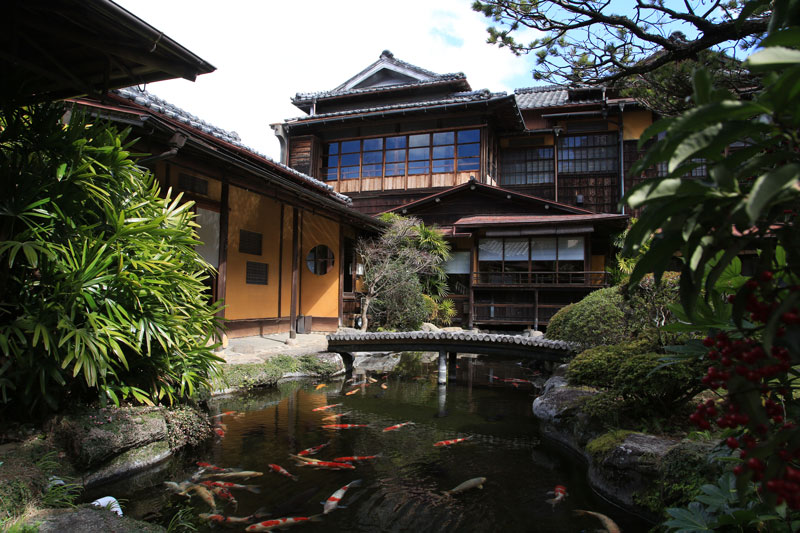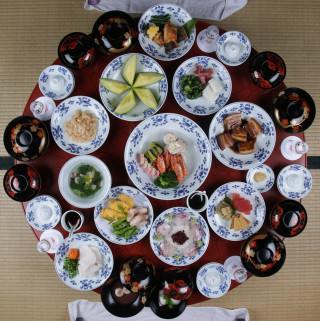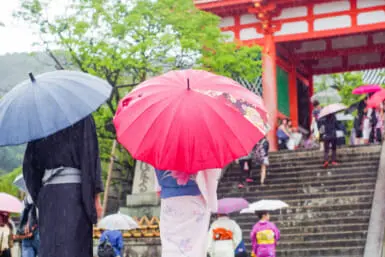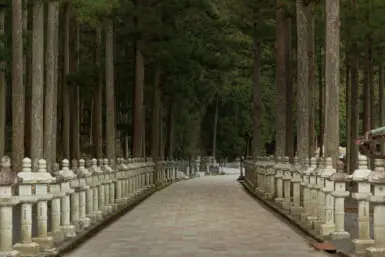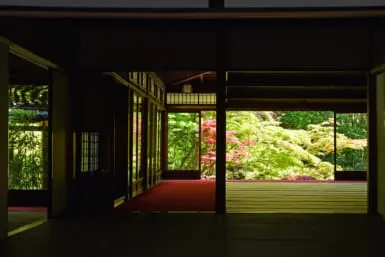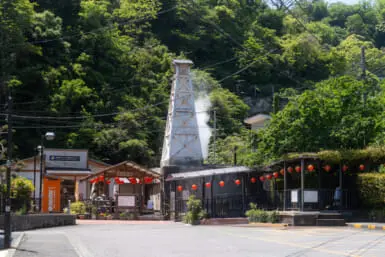One of the first ports to open to the West, Nagasaki was one of Japan’s centers of both industry and Christianity—a legacy that can still be seen in its houses, harbor, and churches today, and tasted in its centuries-old culinary traditions.
By Robert Morel
Glover House & Gardens
In 1859, the year that Japan opened Nagasaki to western trade, a 21-year-old Scottish merchant arrived from Shanghai, little knowing the role he was to play in shaping the future of Japan. With a keen eye for opportunity, Thomas Blake Glover started business exporting green tea to the US, but seeing Japan’s need for modern technology, he quickly expanded to more industrial pursuits. During the years leading up to the Meiji Restoration, he secretly supplied the Satsuma and Choshu clans—later to become important powers in the new Meiji government—with arms and assistance, going so far as to have a hidden room in his home where revolutionaries could hide out. He was a man of firsts, bringing Japan its first steam locomotive and first modern dry dock for shipbuilding, as well as opening its first modern coal mine. He helped found the shipbuilding company that became Mitsubishi as well as the Japan Brewery Company that we know today as the maker of Kirin Beer.
With all these firsts, it’s little surprise that he lived in Japan’s first Western-style wood frame house, beautifully preserved as the centerpiece of Nagasaki’s Glover Gardens. Located on the Minamiyamate hillside in what was once Nagasaki’s designated European settlement, the gardens are a collection of nine of Nagasaki’s earliest Western style houses. Linked by winding stone paths cut through green lawns and flower gardens, the houses are as unique as their former owners. Although Western in style, many of the houses incorporate Japanese touches like the Glover House’s Japanese kawara tiled roof or the local pottery stone used in the Alt Residence’s grand pillars. The houses’ interiors are part history lesson and part recreation—in one room old records lie on a stool as if the owner is about to choose the next selection for the gramophone in the corner. Looking out over the harbor below, a visitor can easily imagine Glover himself looking out over the ships docked below, admiring the world he helped bring to life.
Oura Catholic Church
Established in 1865, Oura Catholic Church has become one of Nagasaki’s most symbolic structures. From afar, the church’s white walls and gothic-style pointed steeple stretch up from the hillside to the skies above. The closer you get, the more impressive it becomes—from the bottom of the stone stairs leading up to the entrance, the church towers above you, the trees on either side blocking out everything else.
Japan’s oldest existing wooden church, Oura became the first Western-style building to be designated a national treasure in 1933. It is here, on March 17, 1865, that Nagasaki’s “hidden followers”—Japanese Christians whose families had secretly practiced what was for over 250 years a forbidden faith—revealed themselves. Though religious services have moved to a nearby building, entering the church gives a feeling of peace: maybe it is the respect shown by other tourists, or the remnants of 150 years of prayer. Inside, long isles of pews, an ornately carved altar, and stained glass windows transport one to another time and place—not Europe, but something European. The original French stained glass, shattered by the atomic bomb in 1945, has been carefully replaced. Inside and out, Oura Church is as welcoming as it is picturesque. As with the harbor and shipyards, it is a symbol not just of Nagasaki, but of the beginnings of a new Japan opening itself to the world.
Nagasaki Ryoutei Hashimoto
At this centuries-old dining institution, a twelve-course meal is elevated to an art form of the highest delicacy and a surprise lies on every dish.
For centuries, Japanese ryotei restaurants were the height of luxury dining throughout the country. Every aspect of ryotei dining is awash in artistry. It is not enough for food to be delectable, it needs to be a feast for the eyes as well. Every plate, cup and decoration is chosen with care. Even the act of greeting guests, serving and conversing with them is a work of delicate choreography. In times past, the inner rooms and gardens, hidden from the world outside, were the reserve of political and business elites, impenetrable to those without an invitation. Today though, ryotei are opening their doors to new guests. Some, like Nagasaki Ryoutei Hashimoto, are going the extra step—reaching out to share and spread this dining tradition.
From the simplicity of Nagasaki Ryoutei Hashimoto’s traditional exterior, you would never know that you are about to experience one of the most elegant dining experiences Nagasaki has to offer. Pulling up to the entrance we are greeted by the kimono-clad proprietress herself, Ms. Yumi Hashimoto. Ms. Hashimoto is the ryotei’s third okami, or proprietress, but that the building and grounds date back much further. Famous for its gardens and springtime cherry blossoms, the area became known as Karurusu Nagasaki. Doctor Erwin Bälz, then one of the most famous doctors and foreigners in Japan, compared it to idyllic scenery of Carlsbad. The name remained for many years, even after the park area was changed into a ryokan—the foundation Ryoutei Hashimoto today. History aside, simply traversing the ryotei’s meandering halls, feeling a cool breeze from the lovely garden outside, seeing the artfully designed play of light and shadow, is a treat for the senses.
And yet all this is just the setting. The food is the real highlight. Making use of the freshest seasonal local ingredients, Nagasaki Ryoutei Hashimoto serves both traditional Japanese kaiseki courses and Nagasaki’s original shippoku cuisine—a unique blend of Japanese and Chinese flavors. Opting for the kaiseki, we sit down for a lavish twelve-course meal. Every dish is a visual delight that bursts to life on the tongue. While the Ise-ebi lobster, matsutake mushrooms, and award-winning Nagasaki beef were delightful, the biggest surprises came from the chef’s expert preparation of much simpler foods. An appetizer that looked to be a perfectly formed, tiny persimmon turned out to be smoked salmon carefully wrapped around a salmon pate. What appeared to be a glistening white biwa fruit was in fact a savory dish made from a mashed lily root and filled with tender minced chicken.
Throughout the meal, Ms. Hashimoto and her staff personify the idea of omotenashi—a kind of cross between hospitality and mind reading, the ability to intuit your guest’s needs. Timing of the food and drinks is perfect, and each course acts as the perfect in-between to the one before and after. Having such a stunning meal and service, while looking out over the pond and trees of the garden is enough to make you forget everything beyond this table, these friends, this lush garden. For a short time, all these elements combine to make Ryoutei Hashimoto our own private world—one that we will most definitely be coming back to.

